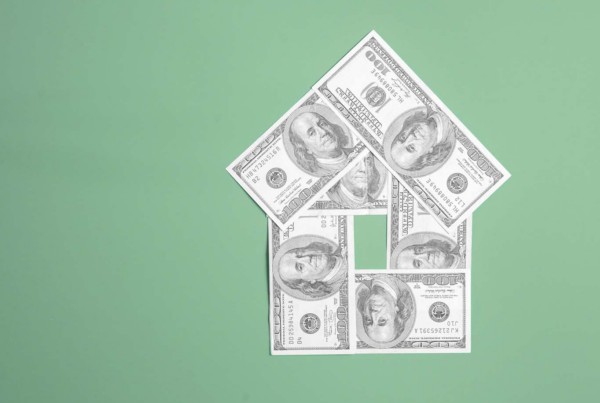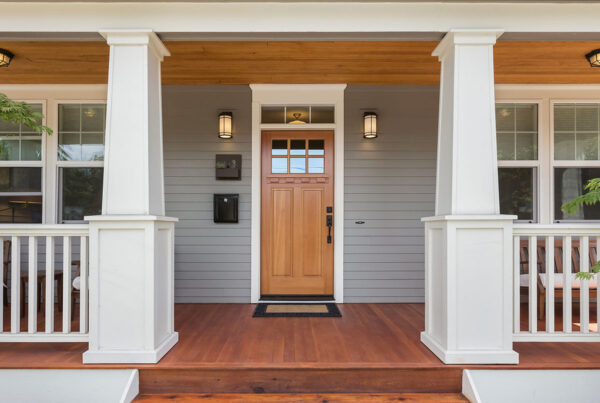If you’re exploring the idea of an unconventional home loan, you may have heard about interest-only mortgages. These types of loans have their advantages and disadvantages, but depending on your specific situation and borrowing needs, it may be the ideal mortgage for you.
What is an interest-only mortgage?
A typical mortgage payment consists of both interest and principal, but with an interest-only mortgage, borrowers have the opportunity to only pay interest for a portion of the mortgage term. Interest-only payments will typically last for the first several years; common examples of loan terms include five years, seven years, or 10 years. Because borrowers are only paying interest during those first few years, their payments are lower, but there is a caveat: in order to meet the principal payments, payments are higher after the interest-only period is up, unless you refinance. Additionally, you won’t begin building home equity until you start paying into your principal.
How does an interest-only mortgage work?
The initial period of an interest-only mortgage can be appealing for some borrowers, but it’s important to look at the entire picture when deciding whether this type of home loan is best suited for you.
To better understand how an interest-only mortgage works, let’s consider the following example: an interest-only 30-year loan for $150,000 with an initial five-year interest-only term. If the interest rate is 3.5 percent, the monthly payments would be $437.50 (excluding other fees, such as property tax or potential HOA fees). Once the interest-only period is over, however, payments begin to go up because the principal starts amortizing, and you’re then paying both principal and interest over a shorter time period. In this specific example, the $437.50 portion of your monthly payment jumps up to $750 beginning in the sixth year. This is because you’re paying both principal and interest amortized over a 25-year period instead of a 30-year period.
Types of interest-only mortgages
In addition to varying terms for the interest-only period, there are also different types of interest-only loans altogether. Exploring the different types of interest-only mortgages more in-depth can help you determine what type of interest-only mortgage works best for you.
Adjustable-rate interest-only mortgages.
Although our example above was with a fixed-rate scenario, interest-only mortgages typically have adjustable rates. Interest-only mortgages are often structured as 3/1, 5/1, 7/1, or 10/1 loans. The first number represents the interest-only payment period, and the second number represents the number of times the rates are adjusted. If you were to take out a 7/1 interest-only mortgage, for instance, you would have interest-only payments for seven years and your interest rate would be adjusted just one time throughout the life of the loan. When your rate is adjusted, it will reflect current market rates, so your rate could either go up or down. Although it does have the potential to increase, there are rate caps that limit just how high they can go and borrowers will know what the rate cap is ahead of time.
Fixed-rate interest-only mortgages.
Although fixed-rate interest-only mortgages are not nearly as common as adjustable-rate interest-only mortgages, they do exist and can be an appealing option when mortgage rates are at an all-time low. ARMs do typically offer interest rates that are slightly lower than average during the introductory period but are then a little higher upon amortization.
Jumbo mortgages.
If you’re looking to borrow beyond conventional loan limits and you also are exploring the idea of an interest-only mortgage, you could benefit from an interest-only jumbo mortgage, which are loans that allow borrowing limits up to $650,000. This could be a good option for buyers who are hesitant to pay into principal because they have concerns about recovering that money when they sell their home.
Interest-only HELOCs.
Home equity lines of credit, or HELOCs, work like credit cards. They are technically second mortgages that give homeowners the opportunity to borrow money while using their homes as collateral. If you have been thinking about taking out a HELOC, you may also have the option to take out an interest-only HELOC. Similar to interest-only mortgages, borrow only pay back interest initially. If the borrower has a 30-year repayment period, the interest-only period may only be the first 10 years, during which the borrower has the option to use as much of the credit line as needed. For the remaining 20 years, the credit line is frozen and the balance is paid off.
Cost comparison
Borrowers can typically expect to pay at least a 0.25 percent premium when taking out an interest-only loan, or an interest rate that’s approximately 0.125 to 0.375 percent higher than the rate for an amortizing mortgage. Before making a final decision about which type of mortgage to take out, it can be helpful to do a cost comparison.
Let’s say you are taking out a $200,000 interest-only mortgage with a fully amortizing ARM or fixed rate. The following is what you could expect to pay each month based on hypothetical interest rates, without taking property taxes, HOA, insurance, and other costs into consideration.
30-year fixed-rate conventional mortgage at 3.625 percent: $912.10/month
7-year interest-only adjustable-rate mortgage at 3.125 percent: $520.84/month
7-year fully amortizing adjustable rate mortgage (30-year amortization) at 2.875 percent: $829.78/month
At these rates, in the short term, an interest-only ARM will cost you $391.26 less each month per $100,000 borrowed during the seven-year interest-only period compared with a 30-year fixed-rate mortgage, and $308.94 less per month compared with a fully amortizing 7/1 ARM. Predicting the entire cost over the lifetime of the loan can be challenging because when it comes to adjustable rates, the only thing you’ll know about ahead of time is the rate cap. With this information, however, you can calculate the minimum and maximum lifetime cost.
Final thoughts on interest-only mortgages
An interest-only mortgage can be a good way for borrowers to save money on their mortgage, but to fully take advantage of the cost-saving benefits that these types of loans offer, it usually means refinancing to a traditional mortgage prior to the interest-only term ending. Alternatively, some borrowers will sell their home before the interest-only term expires, which can make interest-only mortgages a suitable option for borrowers who don’t plan on being in their home for the long haul.
Conventional adjustable-rate mortgages that also include principal as part of the monthly payments can also be another option to consider if you’re looking for lower-than-average interest rates at the beginning of your loan, but you’d also like to pay into your principal from the beginning, too.
Whether you’re looking to take out an interest-only mortgage, refinance a current interest-only loan, or explore your other mortgage options (such as an ARM), Filo Mortgage is here to help. Contact us today to learn more and to discuss your different options.








